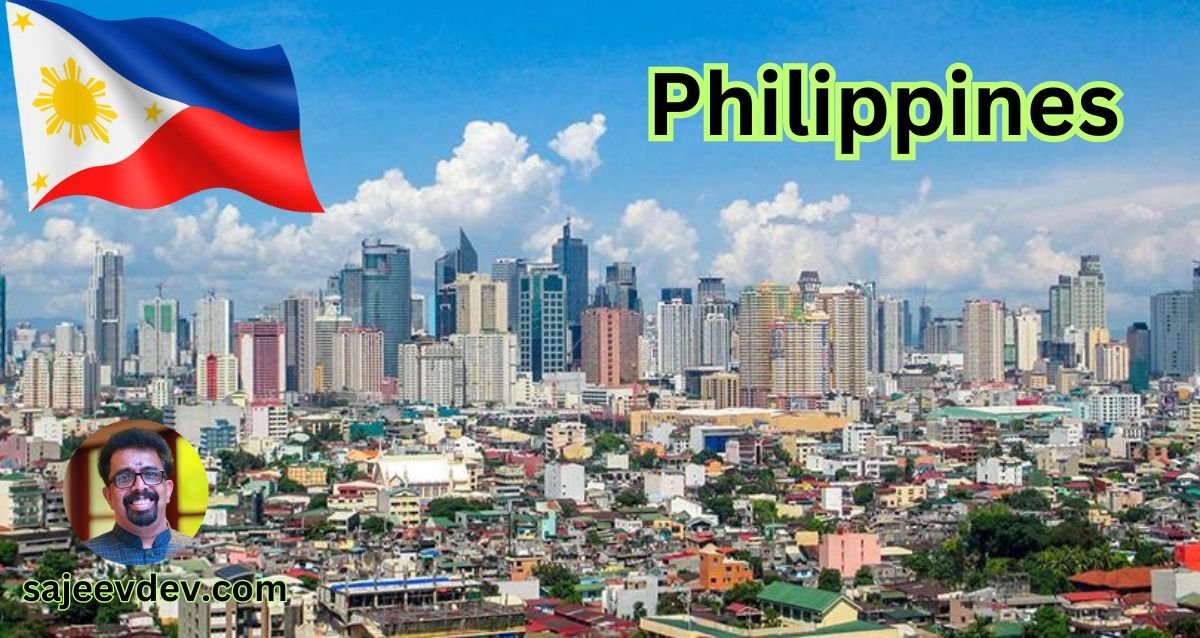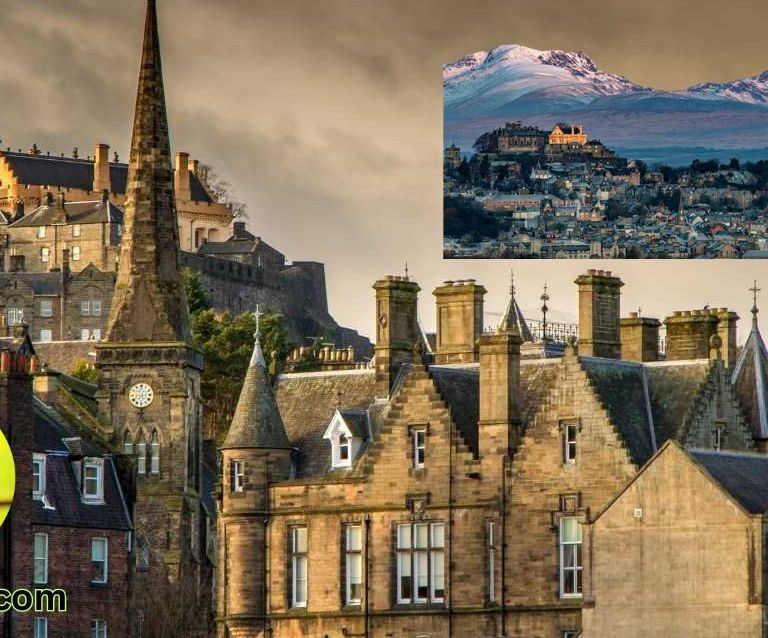A Glimpse into the Philippines
The Philippines, an archipelagic nation in Southeast Asia, comprises over 7,641 islands. Positioned strategically in the western Pacific, it is flanked by the South China Sea to the west, the Philippine Sea to the east, and the Celebes Sea to the south. Neighboring countries include Taiwan to the north, Vietnam to the west, and Indonesia to the south, creating a unique cultural crossroads that has shaped its vibrant history and diverse populace.
As one delves into the Philippines, the interplay between geography and culture becomes evident. Its archipelagic nature bestows the country with an array of landscapes ranging from pristine beaches and lush mountains to bustling urban centers. This diversity extends to its people, who, united by their shared history, speak over 170 languages and dialects. The blend of indigenous traditions with Spanish, American, and other influences provides a fascinating cultural mosaic.
The rich history of the Philippines is a tapestry woven with episodes of colonization, resistance, and gradual modernization. From the pre-colonial tribes to the Spanish conquest in the 16th century and the subsequent American and Japanese occupations, each era has indelibly marked the nation’s heritage. Today, the Philippines stands as a testament to resilience and adaptability, with its modern identity reflecting centuries of transformation and growth.
For those who yearn for exploration, the Philippines offers an abundance of sites that span both natural wonders and historical landmarks. Visitors can journey from the iconic rice terraces of Banaue to the vibrant streets of Manila, experiencing a spectrum of traditions, festivals, and cuisines along the way. This initial glimpse barely scratches the surface of what awaits, promising a captivating journey through islands, history, and culture.
Geographical Divisions: Luzon, Visayas, and Mindanao
The Philippines, an archipelago of more than 7,000 islands, is divided into three primary geographical regions: Luzon, Visayas, and Mindanao. Each of these regions boasts its own unique characteristics, from bustling cities and historical landmarks to lush landscapes and cultural richness, offering a diverse journey for any traveler.
Luzon
Luzon, the largest and most populous island, is often regarded as the political and economic hub of the Philippines. It is home to the capital city, Manila, which offers a blend of modernity and history with its skyscrapers juxtaposed with centuries-old Spanish colonial architecture. Key attractions include the historic walled city of Intramuros, the picturesque Rizal Park, and vibrant districts such as Makati and Bonifacio Global City (BGC).
Beyond Metro Manila, Luzon is renowned for its natural wonders. The majestic Banaue Rice Terraces, often referred to as the “Eighth Wonder of the World,” showcase the ingenuity of ancient Filipino farming techniques. Additionally, the volcanic landscapes of Taal Volcano and Mount Pinatubo provide both adventure and breathtaking vistas.
Visayas
In the Visayas, a group of islands centrally located within the Philippines, one can experience the heart of the country’s cultural and natural splendor. Cities like Cebu and Iloilo are not only bustling commercial centers but also hotspots for historical and cultural attractions. Cebu City, known as the “Queen City of the South,” is famous for the Sinulog Festival, which celebrates religious devotion with vibrant parades and street dances.
The Visayas is also home to some of the country’s most pristine beaches and diving spots. Boracay Island, renowned for its powdery white sand beaches and vibrant nightlife, frequently ranks among the world’s top tropical destinations. Equally alluring are the unspoiled coral reefs of Apo Island and the diverse marine life in diving hubs such as Moalboal.
Mindanao
Mindanao, the second-largest island, offers a different flavor from Luzon and the Visayas. This region is characterized by its lush rainforests, extensive river systems, and vibrant cultural tapestry. Cities like Davao and Cagayan de Oro serve as gateways to numerous natural attractions and are known for their welcoming communities.
Davao City, nestled at the base of Mount Apo, the highest peak in the Philippines, offers a serene yet dynamic urban experience. This region is also rich in indigenous culture, with various festivals celebrating the heritage and traditions of the native tribes such as the Lumad and Moro peoples.
Each of these regions—Luzon, Visayas, and Mindanao—contributes to the rich tapestry of the Philippines. They provide travelers with distinct experiences, from historical explorations and beach getaways to cultural immersions and nature adventures, embodying the diverse spirit of this fascinating archipelago.
Historical Milestones: From Early Inhabitants to Independence
The history of the Philippines is a rich tapestry woven with diverse cultural influences and pivotal events that have shaped the nation. The earliest known inhabitants were the Negritos, who are believed to have arrived around 30,000 years ago. These indigenous people were followed by waves of Austronesian migrants, bringing with them significant advancements in agriculture, navigation, and pottery, laying the foundation for early Filipino society.
The cultural landscape of the Philippines began to diversify with the influences of animist beliefs and later the ingress of religions such as Hinduism, Buddhism, and Islam. These religious imprints arrived through established trade routes with India, China, and the Malay Archipelago. Islamic influence, in particular, became prominent in the southern islands of Mindanao and Sulu, setting the stage for a culturally diverse archipelago.
The arrival of Ferdinand Magellan in 1521 marked the beginning of Spanish colonization. This era lasted for more than 300 years and significantly transformed the socio-political structure of the Philippines. The Spanish introduced Christianity, catapulting the Philippines into becoming the largest predominantly Catholic nation in Asia. However, Spanish rule also led to widespread resistance, culminating in the Philippine Revolution of 1896, spearheaded by figures like José Rizal and Andrés Bonifacio.
The Treaty of Paris in 1898 ended Spanish rule but ushered in the American period. Under the United States, the Philippines saw infrastructure modernization and the introduction of public education. Despite these advancements, desires for complete sovereignty persisted. The Japanese occupation during World War II was a period of particular hardship and strife, which galvanized the Filipino struggle for independence.
With the end of World War II, the United States granted full independence to the Philippines on July 4, 1946. This significant milestone marked the beginning of the nation’s efforts to establish a democratic governance system. The subsequent years saw the Philippines navigating the challenges of post-colonial independence, laying down the democratic framework it is known for today.
Cultural Diversity: Ethnicities, Languages, and Traditions
The cultural diversity of the Philippines stands as one of its most remarkable features, offering a vibrant mosaic of ethnicities, languages, and traditions. This Southeast Asian archipelago is home to over 100 distinct ethnic groups, each contributing to the nation’s rich cultural tapestry. Among the most prominent are the Tagalog, Cebuano, and Ilocano, who form a significant portion of the population. However, numerous other groups, such as the Bicolano, Waray, and Tausūg, also play crucial roles in shaping the nation’s identity.
Language is a focal point in this cultural diversity. The Philippines boasts more than 170 languages and dialects, with Tagalog and Cebuano being the most widely spoken. Filipino, based on Tagalog, and English serve as the official languages, facilitating communication across the country’s varied linguistic landscape. This multilingual atmosphere not only preserves the cultural heritage of each group but also encourages a dynamic exchange of ideas and traditions.
Traditional festivals, or “fiestas,” are vibrant expressions of Filipino culture, exemplifying the blend of indigenous and colonial influences that define the Filipino way of life. The Ati-Atihan Festival in Aklan, the Sinulog Festival in Cebu, and the Pahiyas Festival in Lucban are just a few examples where communities come alive with spirited dances, music, and costumes. These events often reflect a synthesis of indigenous animistic and Catholic practices, showcasing the historical layers of the Filipino cultural experience.
Music and dance are integral to Filipino culture, with each ethnic group possessing unique forms. The “Tinikling,” a traditional dance involving bamboo poles, and the “Kulintang” ensemble, featuring a set of gongs, are renowned for their rhythmic complexity and cultural significance. These artistic expressions provide insights into the values, history, and social structures of the various communities across the islands.
This rich blend of ethnicities, languages, and traditions creates a culturally diverse and vibrant nation. The Philippines remains a testament to the enduring power of cultural preservation and adaptability, continually shaping its identity while embracing global influences. It is this intricate tapestry that makes the Filipino culture distinct and profoundly enriching.
Natural Wonders: Biodiversity and Natural Resources
The Philippines is renowned for its unmatched natural beauty, offering a tapestry of landscapes that attract nature enthusiasts and eco-tourists from across the globe. Spanning over 7,000 islands, the country is a thriving hotspot for biodiversity, harboring an extraordinary array of flora and fauna. Among the most captivating sights are the country’s lush rainforests, which serve as sanctuaries for numerous species of plants, birds, and animals, many of which are endemic and found nowhere else on Earth.
The marine biodiversity of the Philippines is equally impressive. Its coral reefs are part of the Coral Triangle, a global center of marine biodiversity. These vibrant underwater ecosystems teem with life, showcasing colorful corals, a plethora of fish species, and other marine creatures that contribute to the country’s rich aquatic diversity. Such marine environments are indispensable not only for their ecological significance but also for their role in sustaining local communities through fishing and tourism.
A visitor to the Philippines mustn’t miss its unique volcanic landscapes. The archipelago is dotted with over 20 active volcanoes, the most famous of which is Mount Mayon, celebrated for its near-perfect conical shape. These volcanic structures not only add to the country’s scenic allure but also shape the land and influence local culture and livelihoods. The presence of geothermal activity has also led to several hot springs that offer unique natural experiences.
However, the country’s natural beauty doesn’t come without challenges. The Philippines is particularly vulnerable to natural disasters, including earthquakes, volcanic eruptions, and typhoons. The country’s location along the Pacific Ring of Fire makes it prone to seismic activity, while its position in the path of tropical cyclones subjects it to frequent typhoons. These environmental challenges pose significant threats to both biodiversity and human populations, necessitating concerted efforts in disaster preparedness and environmental conservation.
Despite these challenges, the diversity of natural wonders in the Philippines continues to be a significant draw for eco-tourists worldwide. The country’s commitment to preserving its unique ecosystems, while promoting sustainable tourism, ensures that future generations can also appreciate the remarkable natural heritage that the Philippines has to offer.
Economic Transition: From Agriculture to Industry
The economic landscape of the Philippines has undergone a significant transformation over the decades, transitioning from a predominantly agriculture-based economy to a more diversified one centered around services and manufacturing. This shift has been instrumental in propelling the country towards sustained economic growth and development.
A key driver of this transformation has been the rapid growth of the electronics sector. As one of the leading exporters of semiconductors and electronic products, the Philippines has cemented its position in the global supply chain. Major multinational corporations have established manufacturing plants in the country, providing considerable employment opportunities and fostering technological advancements.
Another pillar of the Philippine economy is the burgeoning Business Process Outsourcing (BPO) industry. The Philippines has emerged as a global leader in this sector, thanks to its skilled and English-speaking workforce. BPO services such as customer support, IT outsourcing, and back-office services have established the country as a key player in the global outsourcing market. This industry has not only spurred economic growth but also created millions of jobs, significantly contributing to the nation’s GDP.
Tourism also plays a vital role in the Philippines’ economic development. With its breathtaking landscapes, rich cultural heritage, and welcoming people, the country has become a favored destination for tourists from around the world. The influx of tourists has further stimulated economic activities, generated revenue, and opened up numerous employment prospects in hospitality, travel, and related sectors.
On the international stage, the Philippines has taken an active role in prominent organizations such as the United Nations and the Asia-Pacific Economic Cooperation (APEC). As an emerging market, the country has leveraged these platforms to foster economic cooperation, attract foreign investments, and fortify its economic ties with other nations. This global engagement underscores the Philippines’ commitment to achieving inclusive and sustainable economic growth.
In summary, the economic transition of the Philippines from agriculture to industry has positioned the nation as a significant player in the global economy. The rise of key industries like electronics, BPO, and tourism exemplifies the dynamic nature of its economic development, while its active participation in international organizations highlights its burgeoning role on the world stage.
Travel Tips: Navigating Your Philippine Adventure
Planning a trip to the Philippines requires careful consideration of various factors to ensure a smooth and enjoyable journey. Timing your visit is crucial; the best time to explore the islands is during the dry season, from November to April, when the weather is typically sunny and ideal for beach activities and island hopping. During this period, you are more likely to experience pleasant weather, allowing you to fully enjoy the outdoor attractions the Philippines is famous for.
Before you embark on your adventure, familiarize yourself with visa requirements. Most travelers can stay up to 30 days without a visa, but it’s essential to check specific regulations based on your nationality. Health and safety precautions are also paramount. Ensure you are up-to-date on routine vaccines and consider vaccinations for diseases such as hepatitis A, hepatitis B, and typhoid. Travel insurance is highly recommended to cover any unforeseen emergencies.
Transportation within the Philippines can be an adventure in itself. Major cities like Manila and Cebu offer a variety of options, including taxis, ride-sharing apps, and public buses. For inter-island travel, domestic flights are quick and efficient, while ferries and boats provide scenic routes to numerous islands. When using local transport, always agree on fares in advance and be cautious with your belongings to ensure a safe journey.
Understanding cultural etiquette is key to a respectful and enjoyable experience. Filipinos are known for their hospitality, and a warm smile goes a long way. Dress modestly, especially when visiting religious sites, and always ask for permission before taking photographs of people. Learning a few basic phrases in Filipino, such as “salamat” (thank you) and “po” for added politeness, can enhance your interactions with locals.
There are countless destinations and activities to explore. Must-visits include the stunning beaches of Palawan and Boracay, historical sites in Manila and Vigan, and the vibrant markets and culinary scenes in Cebu and Davao. Island hopping, diving in pristine waters, and sampling local delicacies are experiences you shouldn’t miss.
Exploring the rich tapestry of the Philippines unveils not just the sheer beauty of its islands
Exploring the rich tapestry of the Philippines unveils not just the sheer beauty of its islands, the depth of its history, or the vibrancy of its culture, but also the essence of the Filipino spirit. This unifying ethos is defined by the warmth, hospitality, and resilience of the Filipino people. Their innate sense of warmth instantly makes visitors feel at home, creating an inviting atmosphere that compels one to delve deeper into what makes this country so special.
Hospitality in the Philippines goes beyond mere politeness; it is a genuine eagerness to share and connect, to include others in their celebrations, and to make every visitor feel like part of the family. Whether it’s in the bustling streets of Manila, the pristine beaches of Palawan, or the highlands of Ifugao, the Filipino hospitality is a consistent thread that brings all the diverse experiences together into a cohesive and enriching journey.
Moreover, the Filipino spirit is marked by a remarkable resilience. The archipelago has faced its share of natural calamities and historical challenges, yet the people remain undaunted and hopeful. This resilience is etched into the daily lives of Filipinos, manifesting in their vibrant festivals, stories, and even their everyday smiles. It is a testament to their unyielding spirit and ability to find joy and meaning no matter the circumstance.
Immersing oneself in the local culture, connecting with the people, and experiencing the unique charm of the Philippines offers an unforgettable encounter with this resilient spirit. The islands of the Philippines are more than a picturesque destination; they are a vibrant testament to the enduring strength and welcoming nature of its people. The rich cultural heritage and the indomitable Filipino spirit make this nation a timeless treasure, waiting to be explored and embraced.
So, as you set your sights on the diverse landscapes of this Southeast Asian gem, let the Filipino spirit be your guide, and allow yourself to be enveloped in the warmth and resilience of its people. Such an experience guarantees lasting memories and a profound appreciation for a culture that is as multifaceted and enchanting as the islands themselves.









